78 rpm gramophone records
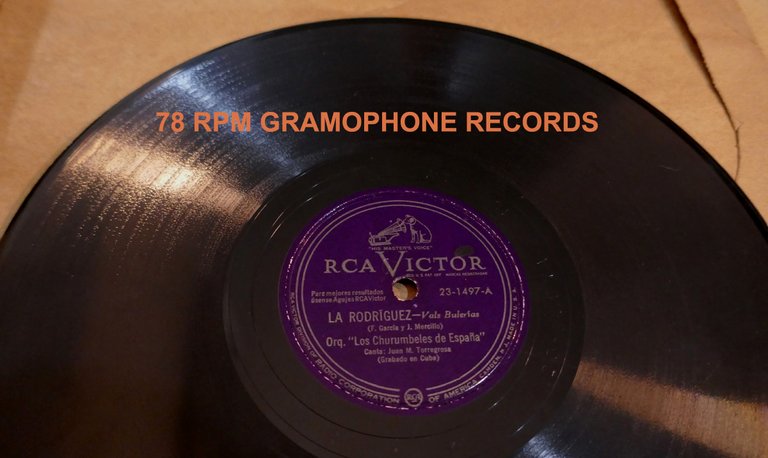
Years ago, while I was walking through the old part of Havana, an old man was sitting at the entrance of a garage, where you could see many books and objects, which were of interest to me. He was a seller of old things.
The place gave off a yellowish light, emitted by a solitary incandescent bulb. Dust reigned the environment, and the state of the objects he was offering, reflected the traces of time. I saw a sign that read: Lacquer discs, pre-World War I.
That sign caught my eye. Normally, I use vinyl records to revel in the hits of the 1980s. The person explained to me that those records, were 78 rpm or revolutions per minute, for use only with vintage gramophones.
The gentleman showed me one of them, and as I held it I perceived it to be heavier and of an opaque color. He told me that it had a single song engraved on each side, and that they were built before 1914.
All this information was new to my neurons, but it was very appealing to me. My taste in music, and the technology behind it, is something I've always loved, ever since I was a teenager. So I bought some of those rare records from him, and he gave them to me in a green album, somewhat deteriorated.
Today, I will share with you, what I have left of those records, and some interesting facts.
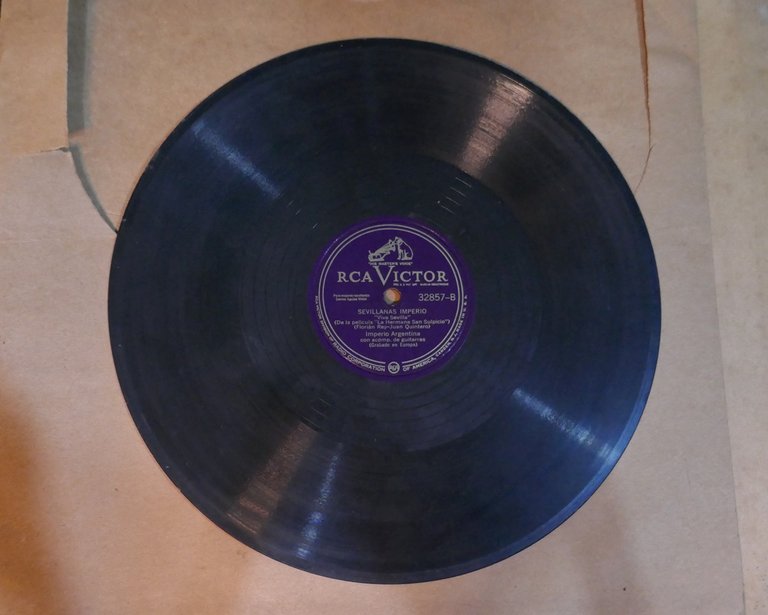
When I got home that day, I started to investigate to learn more about my new acquisition. I could not test them, because I did not have a gramophone.
Over time, some of the records have fractured by simple handling. The high relative humidity, together with the great heat of Cuba, is a very aggressive environmental binomial for many objects and equipment.
When were these 78 rpm records manufactured?
From the end of the nineteenth century, until the middle of the twentieth century.
They were made of hardened rubberized lacquer, hence their greater weight, but at the same time, they are more fragile than vinyl records.
This shellac is an organic substance that comes from the exudative secretion of the insect: Kerria lacca, native to Asia.
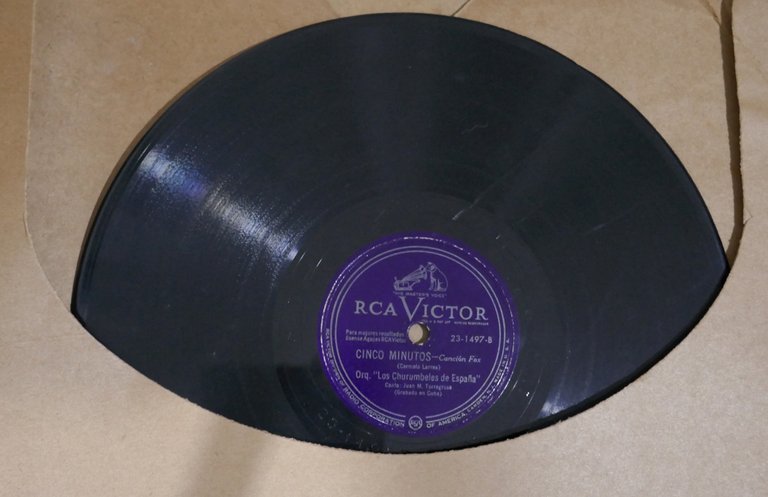
They were sold in their paper sleeve to protect them. With circular opening in the center or crescent, with the purpose of showing the record label, name of the song, author and other data.
Before 1890, only one song was recorded on one side. After 1923, records with recordings on both sides were sold in Europe.

They had two average size formats in diameter: 10 and 12 inches, depending on the musical genre. Opera music was recorded on large discs because of the extension they occupied.
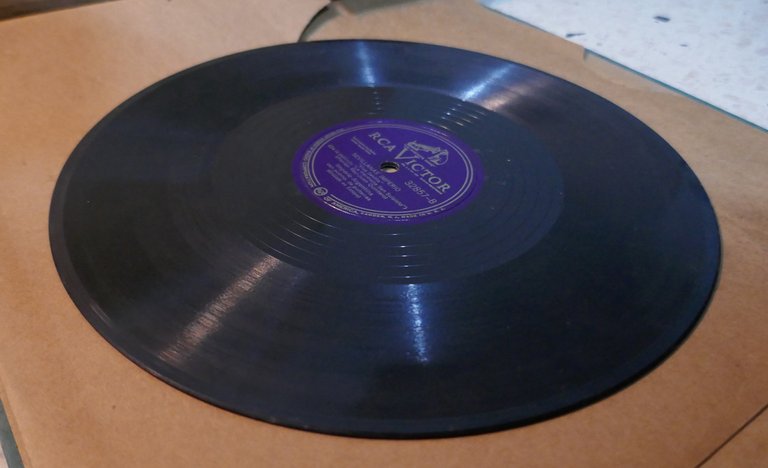
These 78 rpm records were still being manufactured until 1949. After that, the world famous labels, Columbia and Victor Records, released their first records at speeds of 33 and 45 rpm.

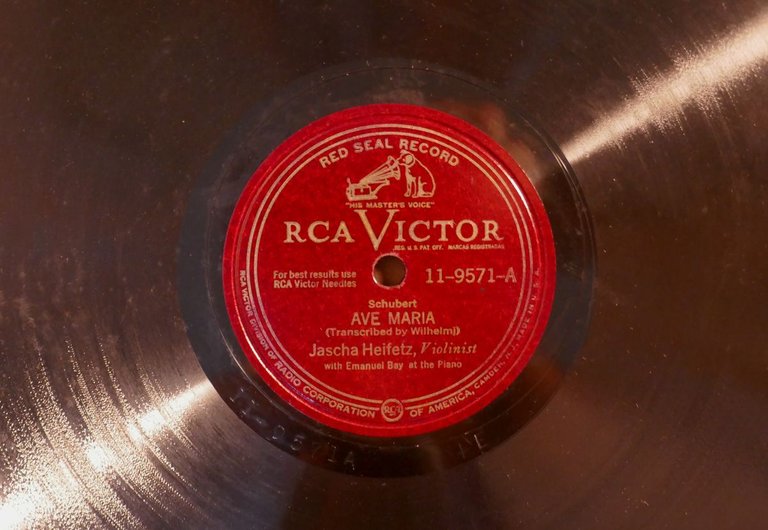
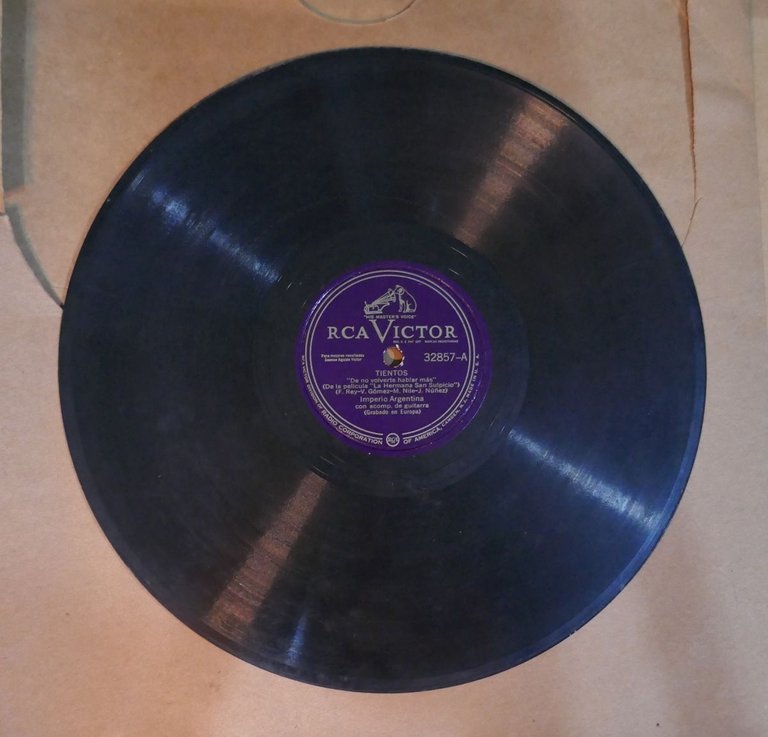
Among the records I bought, the labels of pioneering companies worldwide stand out. Columbia Records, the first one in USA, and later RCA Victor, name of the initials of Radio Corporation of America (RCA), which later merged with Victor Records to have its legendary name.
Next to its logo image liked by collectors of shellac records and vinyl: we find the little dog born in England named Nipper, looking and listening to "His master's voice", coming out of a horn gramophone. A symbol of quality and excellence, which has earned its respect worldwide.
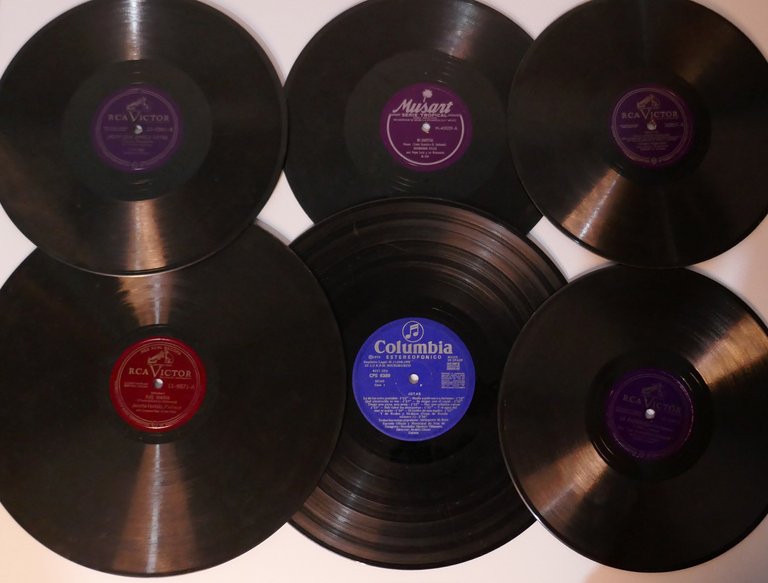
The records showed their labels in the center, using different colors, according to the criteria of the record company and the musical genre recorded.
Once I took pictures of my most vintage records, I put them in that green album that he gave me, and that I try to take care of with delicacy.
He passed away a few years ago, but I will always remember the passion he had for the history of his objects, his creative poster above the records, and the initial information, which was the trigger, so that today I have with me such a beautiful story.


Own photos. Camera: Panasonic Lumix model DMC-ZS100
Text divider. Free use from @eve66
Text by Andrés Brunet
Thank you for reading
Welcome your comments
Infinite greetings!
quite an expensive collection, friend @abrunet
Thanks for commenting. They are records that I like to collect, more for their history and provenance. They are well vintages objects and over the years they are better priced in the market. Regards
Congratulations @abrunet! You have completed the following achievement on the Hive blockchain And have been rewarded with New badge(s)
Your next payout target is 1000 HP.
The unit is Hive Power equivalent because post and comment rewards can be split into HP and HBD
You can view your badges on your board and compare yourself to others in the Ranking
If you no longer want to receive notifications, reply to this comment with the word
STOPCheck out our last posts:
Vinyl records collection - that is definitely what is worth collecting!
I don't have here any, but my parents have a shelf of vinyl records, but as far as I remember we did not have a gramophone. 🎶
Hi mipiamo. One detail, the acetate or vinyl records that are the most commonly seen, are usually 33 and 45 RPM. The shellac records, 78 RPM are the ones that were used in string gramophones, which later became electric. Someday, if you wish, you will have them, whatever type they are. Greetings